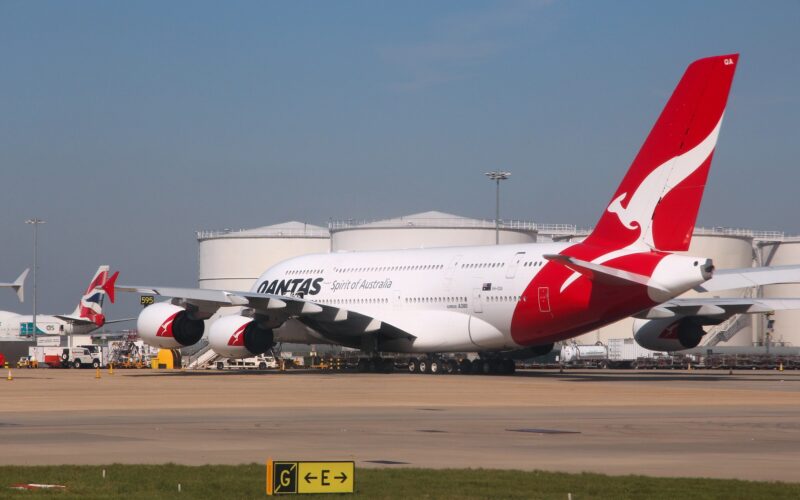Qantas has revealed that before receiving the Boeing 787-9 Dreamliner its iconic ‘Kangaroo Route’ flights between Australia and London, the United Kingdom (UK), were loss-making.
Qantas previously operated a twice-daily flight to London Heathrow Airport (LHR). QF9 departed from Melbourne Airport (MEL) with a stop at Dubai International Airport (DXB), while QF1 departed Sydney Airport (SYD) and arrived at LHR with a stop at DXB.
From March 2018, the QF1 SYD-DXB-LHR itinerary changed to include a stop at Singapore Changi Airport (SIN). QF9 began as a flight between MEL, Perth Airport (PER), and LHR, with a Boeing 787-9.
According to Qantas’ latest Investor Day presentation, which took place on May 5, 2023, the route’s success was underpinned by four factors related to the Boeing 787-9:
- Smaller gauge that lowers commercial risk and enables smaller markets, thus improving revenue management
- Long-haul capability without the requirement for large gauge
- Premium cabin mix that delivers higher-quality revenue
- A state-of-the-art product that drives Net Promoter Score (NPS) across all cabins.
Qantas added that the Boeing 787-9 has enabled it to explore routes to various cities globally, including Paris, France, Chicago, the United States (US), and Seattle, the US.
The airline has already launched flights from PER to Rome–Fiumicino International Airport (FCO), from MEL to Dallas Fort Worth International Airport (DFW), from SYD to Johannesburg O. R. Tambo International Airport (JNB), and from Auckland Airport (AKL), New Zealand, to New York John F. Kennedy International Airport (JFK).
Flights to JNB and JFK are scheduled to begin in June 2023.
Qantas expanding long-haul fleet, including Project Sunrise A350s
Qantas was set to take delivery of three Boeing 787-9s in Q4 FY23, which is a fiscal period between April 1, 2023, and June 30, 2023. According to ch-aviation.com data, Boeing has already delivered one 787-9, registered as VH-ZNL, to the airline in April 2023, and two others are expected to arrive shortly.
The soon-to-be-delivered 787-9s, registered as VH-ZNM and VH-ZNN, will take the airline’s total 787-9 fleet to 14, including the recently delivered VH-ZNL. The airline also has the following wide-body aircraft in its fleet: 18 Airbus A330-200, 10 A330-300, and 10 A380s, seven of which are currently active.
One additional Airbus A380 will join the airline’s operations by the end of 2023, taking the fleet of superjumbos to eight.
Qantas anticipates Airbus A350 aircraft deliveries to be used for Project Sunrise to take place between FY2026 (which begins on July 1, 2025) and FY2028 (ending on June 31, 2028). In total, by FY2030, the Australian carrier expects incremental earnings of more than AUD400 million ($261.6 million) per year, including freight contribution and the redeployment of the Boeing 787-9 fleet.
Qantas highlighted that delivery of the Project Sunrise Airbus A350 aircraft will allow the carrier to redeploy the 787-9s elsewhere, further optimizing its international flight network.
The airline noted that the promotion of ultra-long-haul flights with Project Sunrise has other benefits, such as maximizing revenue from passengers willing to pay for non-stop services. While Qantas had to adopt all cabin classes for the long-distance routes, the airline said point-to-point connections are “core to the Qantas customer base”. The project will also have group-wide benefits, including for domestic passengers and members of the carrier’s loyalty program.
To sustain its growth, Qantas is planning to hire up to 8,500 new employees within the next 10 years and fill 2,300 operational roles over the next 18 months.

